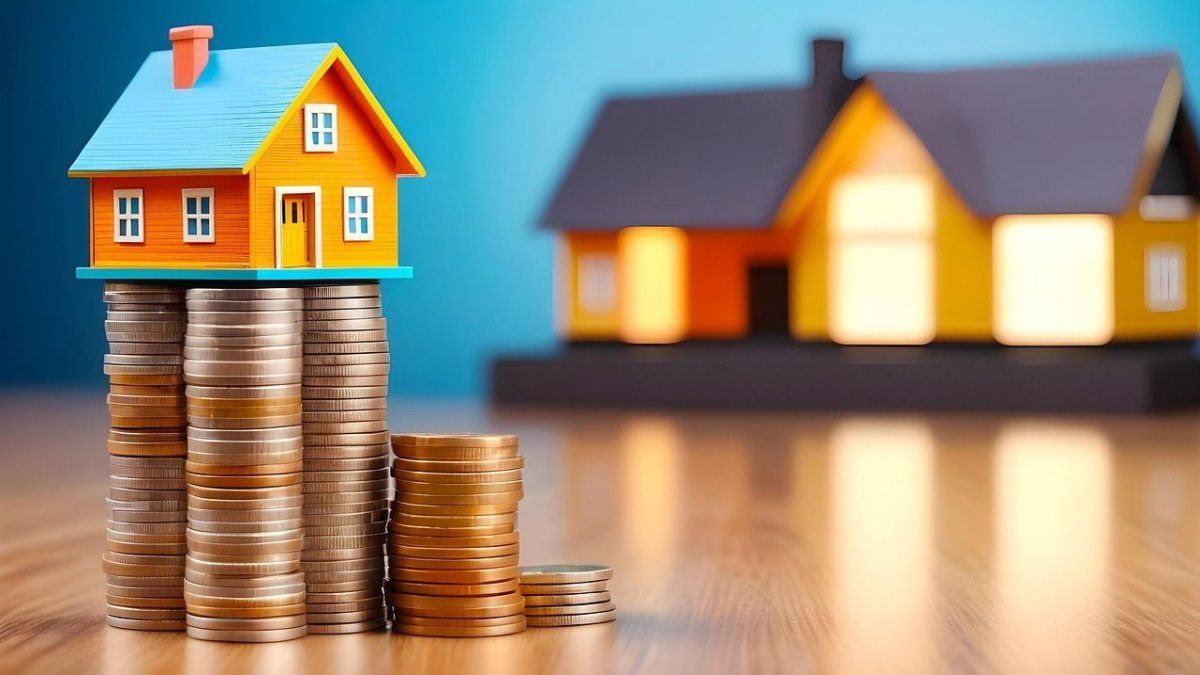BuySellBA
Administrator
Why haggling fell to 6% and how it changed the real estate market - Ambito Financiero

Source:

 www.ambito.com
www.ambito.com
June 06, 2025
Rising prices, the reappearance of units for sale, and the impact of credit explain a more active sector, where sellers and buyers are beginning to negotiate based on closer estimates. What's expected for the second half of the year?
By Jose Luis Cieri

The haggling rate in Buenos Aires has been reduced; owners no longer accept steep discounts on listing prices.Pexels.
The real estate market is showing clear signs of recovery . Although listing prices continue to rise and supply remains high in the City of Buenos Aires, the most significant piece of data from the May Real Estate Radar—prepared by Fabián Achával Properties—is the narrowing of the negotiation margin. In other words, bargaining has narrowed.
Fabián Achával , CEO of the firm and author of the report, explained that the closing price of used properties rose 11.7% in the last twelve months. “Negotiation rates in the first quarter hovered around 6%, according to data from the Real Estate Transaction Registry (ROI-Selectia) . This is excellent news given that they are lower than those observed at the beginning of 2019 and reflect the current dynamics of the sector, which appears to have left behind the worst years of the crisis.”
Regarding closing prices—that is, the price resulting from transactions actually carried out between sellers and buyers—despite the increase, prices remain 20.3% lower than at the beginning of 2019 in nominal terms and 36.1% lower in real terms. For this reason, the "upside" (the potential for future price increases) of securities is still significant.

In fact, in historical perspective, prices are at 2006 levels in real terms, and this is one of the main drivers of current demand. Trading percentages relative to the last published value narrowed significantly in the last quarter of the year, even falling below the first quarter of 2019, when ROI data began to be collected.
This narrower margin occurs in a context of rising published prices. In April, a year-over-year increase of 8.5% was observed, with an acceleration in recent months, accumulating fifteen consecutive increases. In the so-called northern corridor—which includes the most sought-after areas in Buenos Aires—the increase reached 9.4% year-over-year, according to an analysis by Mercado Libre-Universidad de San Andrés (UDESA) .
Achával attributed this phenomenon to a change in market conditions: "The increase is linked to a lesser urgency to sell and better macroeconomic conditions. Today, there are almost 40,000 more properties than during Macri's UVA loan boom, and until the used residential market clears out, the pace of price adjustment will be slower."
Furthermore, prices have become considerably more realistic, in contrast to what was happening during the height of the pandemic, when prices were highly dispersed. Currently, owners are reluctant to accept aggressive reductions in purchase and sale quotes, which also explains why bargaining remained at 6%, compared to an average of 10% in 2021.

"Demand is growing, but supply isn't falling because many properties that had been withdrawn from sale in previous years are returning to the market in search of better conditions," the specialist explained. Within this context, there is pressure on prices, but also a clearer segmentation: while some units are adjusting their values upward, others remain stagnant, especially if they are poorly located, overpriced, or in poor condition.
In the most sought-after types of apartments, the increases are more noticeable. The report details that in the last 12 months, one- and two-bedroom apartments registered increases of 10.6% and 10.2% respectively, while three-bedroom apartments increased by 6.9%. The overall average in Buenos Aires City was US$2,213 per square meter. Among the neighborhoods with the highest price growth, Palermo led with 12.8%, followed by Belgrano, Caballito, and Villa Crespo.
One of the most dynamic factors currently driving mortgage lending is the return of mortgage lending. In April, 21.8% of deeds in Buenos Aires were completed with a mortgage . This represented a total of nearly 1,200 mortgage transactions, a figure not seen for more than five years.

“Credits generate a lot of dynamism. But beyond the specific number, we must consider the multiplier effect: one credit transaction is often linked to others. When someone buys with a mortgage, they sell their previous property, and that enables new chain movements,” Achával explained.
Regarding the number of new listings, the Radar detailed that from March to April 2025, 8,737 additional listings were added, representing a monthly growth of 12.1%. This reflects that, despite the improvement in the level of transactions, supply continues to expand and deepens the structural oversupply in the used residential market.
The stock has not decreased for 29 consecutive months and remains above the historical highs recorded during the UVA credit boom in 2017 and 2018.
Achával stated: "The Government resolved many of the challenges ahead in 2025. This, along with exchange rate stability, marks a very favorable scenario for the remainder of the year." This perception is reflected in online property searches: according to Radar data, the main real estate portals registered a 13.1% increase in the number of listings viewed, consolidating a trend of sustained growth since the beginning of 2024.
In terms of concrete values, according to Zonaprop, a one-bedroom apartment costs US$127,894 and a three-bedroom apartment costs US$176,091.

Piantoni noted that mortgage loans play a central role: today, 20% of deeds are finalized with bank financing. This allows many families to expand their homes, although the recovery has not yet reached the market for new or under construction units, which continues to be affected by an overstock of used units and a lack of credit for this segment.
Faced with rising costs, developers began offering direct financing schemes. The lifting of restrictions and the opening of the economy are beginning to change market expectations.
www.buysellba.com

Source:

Por qué el regateo se redujo al 6% y cómo cambió la negociación en el mercado inmobiliario
La suba de precios, la reaparición de unidades en venta y el impacto de los créditos explican un sector más activo, donde vendedores y compradores empiezan a negociar sobre cifras más cercanas. Qué se espera para el segundo semestre.
June 06, 2025
Rising prices, the reappearance of units for sale, and the impact of credit explain a more active sector, where sellers and buyers are beginning to negotiate based on closer estimates. What's expected for the second half of the year?
By Jose Luis Cieri

The haggling rate in Buenos Aires has been reduced; owners no longer accept steep discounts on listing prices.Pexels.
The real estate market is showing clear signs of recovery . Although listing prices continue to rise and supply remains high in the City of Buenos Aires, the most significant piece of data from the May Real Estate Radar—prepared by Fabián Achával Properties—is the narrowing of the negotiation margin. In other words, bargaining has narrowed.
Fabián Achával , CEO of the firm and author of the report, explained that the closing price of used properties rose 11.7% in the last twelve months. “Negotiation rates in the first quarter hovered around 6%, according to data from the Real Estate Transaction Registry (ROI-Selectia) . This is excellent news given that they are lower than those observed at the beginning of 2019 and reflect the current dynamics of the sector, which appears to have left behind the worst years of the crisis.”
Regarding closing prices—that is, the price resulting from transactions actually carried out between sellers and buyers—despite the increase, prices remain 20.3% lower than at the beginning of 2019 in nominal terms and 36.1% lower in real terms. For this reason, the "upside" (the potential for future price increases) of securities is still significant.

In fact, in historical perspective, prices are at 2006 levels in real terms, and this is one of the main drivers of current demand. Trading percentages relative to the last published value narrowed significantly in the last quarter of the year, even falling below the first quarter of 2019, when ROI data began to be collected.
This narrower margin occurs in a context of rising published prices. In April, a year-over-year increase of 8.5% was observed, with an acceleration in recent months, accumulating fifteen consecutive increases. In the so-called northern corridor—which includes the most sought-after areas in Buenos Aires—the increase reached 9.4% year-over-year, according to an analysis by Mercado Libre-Universidad de San Andrés (UDESA) .
Achával attributed this phenomenon to a change in market conditions: "The increase is linked to a lesser urgency to sell and better macroeconomic conditions. Today, there are almost 40,000 more properties than during Macri's UVA loan boom, and until the used residential market clears out, the pace of price adjustment will be slower."
Furthermore, prices have become considerably more realistic, in contrast to what was happening during the height of the pandemic, when prices were highly dispersed. Currently, owners are reluctant to accept aggressive reductions in purchase and sale quotes, which also explains why bargaining remained at 6%, compared to an average of 10% in 2021.
Real estate stock
Despite the surge in demand, according to Radar Inmobiliario, the stock of properties for sale is not declining. During April, in Buenos Aires City, more than 106,000 properties remained listed, of which 72,000 were apartments. In this last segment, the volume offered grew 0.4% compared to March, marking a persistent oversupply that has lasted for more than five years.
"Demand is growing, but supply isn't falling because many properties that had been withdrawn from sale in previous years are returning to the market in search of better conditions," the specialist explained. Within this context, there is pressure on prices, but also a clearer segmentation: while some units are adjusting their values upward, others remain stagnant, especially if they are poorly located, overpriced, or in poor condition.
In the most sought-after types of apartments, the increases are more noticeable. The report details that in the last 12 months, one- and two-bedroom apartments registered increases of 10.6% and 10.2% respectively, while three-bedroom apartments increased by 6.9%. The overall average in Buenos Aires City was US$2,213 per square meter. Among the neighborhoods with the highest price growth, Palermo led with 12.8%, followed by Belgrano, Caballito, and Villa Crespo.
One of the most dynamic factors currently driving mortgage lending is the return of mortgage lending. In April, 21.8% of deeds in Buenos Aires were completed with a mortgage . This represented a total of nearly 1,200 mortgage transactions, a figure not seen for more than five years.

“Credits generate a lot of dynamism. But beyond the specific number, we must consider the multiplier effect: one credit transaction is often linked to others. When someone buys with a mortgage, they sell their previous property, and that enables new chain movements,” Achával explained.
Regarding the number of new listings, the Radar detailed that from March to April 2025, 8,737 additional listings were added, representing a monthly growth of 12.1%. This reflects that, despite the improvement in the level of transactions, supply continues to expand and deepens the structural oversupply in the used residential market.
The stock has not decreased for 29 consecutive months and remains above the historical highs recorded during the UVA credit boom in 2017 and 2018.
Towards the second semester
The report also analyzes buyers' and sellers' expectations for the second half of the year . It highlights a generally more optimistic climate. The stabilization of the exchange rate, the agreement with the International Monetary Fund, progress in ending the currency controls, and the political consolidation of the ruling party are all signs that, according to the analysis, create a more predictable scenario.Achával stated: "The Government resolved many of the challenges ahead in 2025. This, along with exchange rate stability, marks a very favorable scenario for the remainder of the year." This perception is reflected in online property searches: according to Radar data, the main real estate portals registered a 13.1% increase in the number of listings viewed, consolidating a trend of sustained growth since the beginning of 2024.
In terms of concrete values, according to Zonaprop, a one-bedroom apartment costs US$127,894 and a three-bedroom apartment costs US$176,091.
Cost to build on the rise
The drop in inflation and a stable exchange rate created better conditions for closing deals. Martín Piantoni , CEO of Alton Desarrollos, explained that the market is experiencing a new growth cycle. "In April, 5,471 deeds were signed in Buenos Aires City; the average sales period fell from 10.3 years in 2020 to 1.8 years currently."
Piantoni noted that mortgage loans play a central role: today, 20% of deeds are finalized with bank financing. This allows many families to expand their homes, although the recovery has not yet reached the market for new or under construction units, which continues to be affected by an overstock of used units and a lack of credit for this segment.
Faced with rising costs, developers began offering direct financing schemes. The lifting of restrictions and the opening of the economy are beginning to change market expectations.
www.buysellba.com

